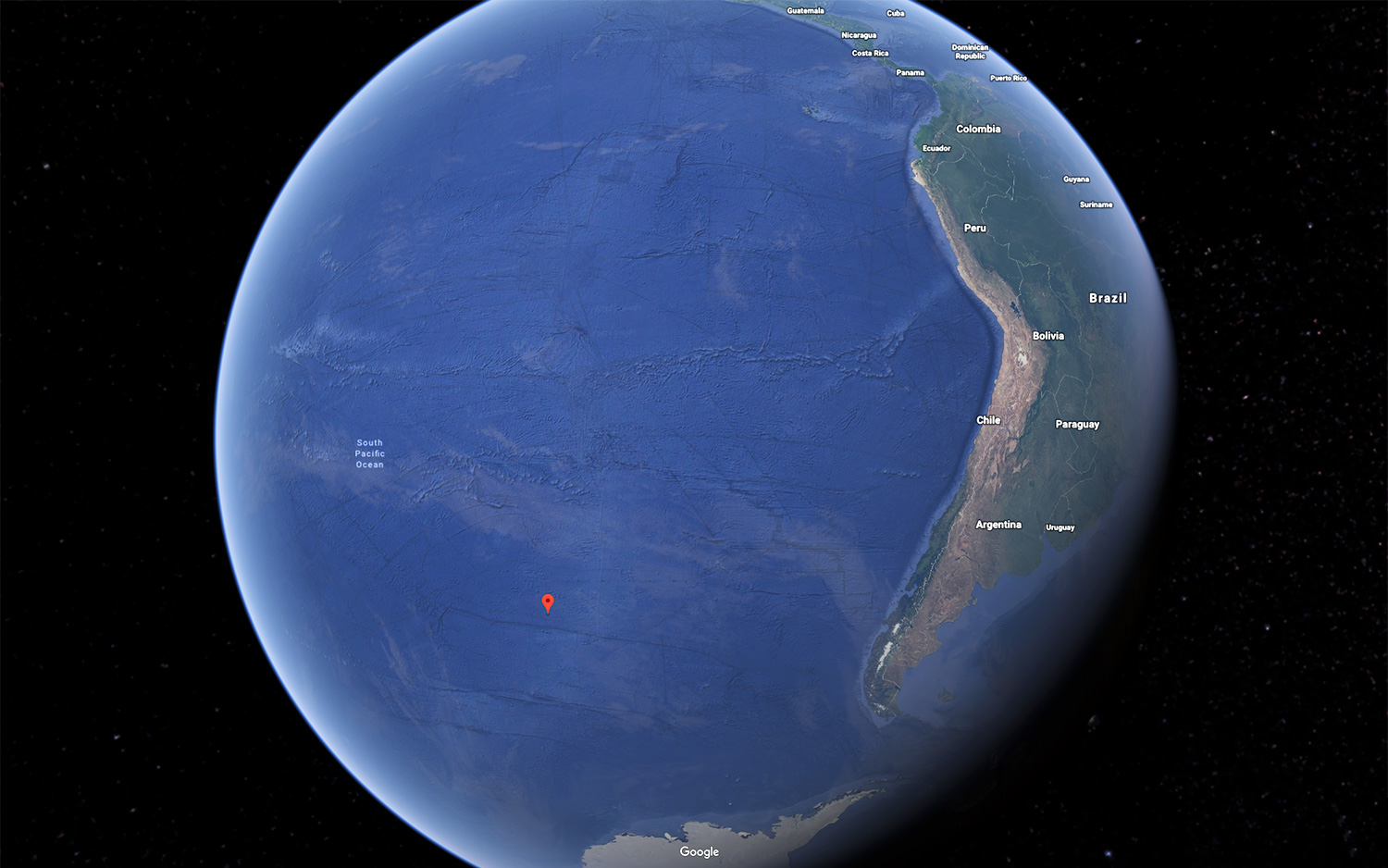The Chinese Space Station Narrowly Missed Landing in the World's Largest 'Spacecraft Cemetery'

If you were asked to choose the ideal spot for an out-of-control, disintegrating space station to crash-land on Earth, you might wisely suggest "the most remote place on the planet."
That place is Point Nemo — also known as the "Oceanic Pole of Inaccessibility." Named for Jules Verne's deep-sea-diving captain of "Twenty Thousand Leagues Under the Sea" fame, Point Nemo is nestled in the middle of the southern Pacific Ocean, farther from land (and humanity) than any other point on Earth. It is located, literally, in the middle of nowhere. But it isnꞌt empty.
About 2.5 miles (4 kilometers) below the ocean's surface, Point Nemo houses the largest "Spacecraft Cemetery" on Earth, concealing the ripped-up remains of hundreds of defunct spacecraft that were guided there in controlled re-entries dating back to the 1970s. Last night (April 1), China's out-of-control Tiangong-1 space station almost landed there by sheer cosmic coincidence. [Gallery: Tiangong-1, China's First Space Laboratory]
Why is Point Nemo such a popular spot for controlled spacecraft re-entry? Simply put, it's the least-likely place on Earth for a human to get in the way of crash-landing debris. In the middle of the south Pacific Ocean between Australia, South America and Antarctica, Point Nemo is more than 1,450 miles (about 2,700 km) from the nearest land (the Pitcairn Islands to the north, one of the Easter Islands to the west and Antarctica's Maher Island to the south), according to the National Oceanic and Atmospheric Administration. No vessels ever travel there; there is nothing to see.
Tiangong-1's re-entry into Earth's atmosphere was not controlled, but hundreds of similar spacecraft re-entries have been. Of these controlled descents, nearly 300 crash-landing spacecraft have been intentionally guided to Point Nemo since 1971, Popular Science reported. The buried debris includes everything from spent fuel tanks to spy satellites to entire defunct space stations. Nearly 200 of the cemetery's residents are Russian in origin, including the area's biggest celebrity: the 140-ton (127 metric tons) MIR space station, which was guided to Point Nemo in a controlled atmospheric re-entry in 2001. The International Space Station (ISS) is also scheduled to crash into Point Nemo once its mission is complete, sometime after 2024.
The red-hot remains of Tiangong-1 didn't land precisely in the spacecraft cemetery following their uncontrolled deorbit last night, but they did come somewhat close by pure chance. The space station reportedly landed in the south Pacific Ocean near American Samoa, several thousand miles northwest of Point Nemo.
Tiangong-1's re-entry was confirmed at about 8:16 p.m. EDT (0016 GMT on April 2).
Sign up for the Live Science daily newsletter now
Get the world’s most fascinating discoveries delivered straight to your inbox.
Researchers speculated for weeks about the possible location of the space station's crash landing, providing a map of possible sites that covered about one-third of the world's surface. According to Aerospace.com, there was little question that the space station would land in the ocean, which covers most of the world. The odds of a human being struck by debris from the space station's re-entry were estimated to be about 1 in 300 trillion.
Originally published on Live Science

Brandon is the space/physics editor at Live Science. His writing has appeared in The Washington Post, Reader's Digest, CBS.com, the Richard Dawkins Foundation website and other outlets. He holds a bachelor's degree in creative writing from the University of Arizona, with minors in journalism and media arts. He enjoys writing most about space, geoscience and the mysteries of the universe.










